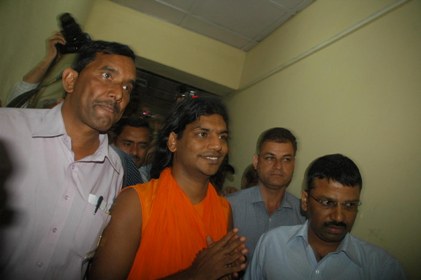Shimla: The Shimla hills once again echoed with the rhythmic ‘chuff-chuff-choo-choo’ of the British-era steam engine Friday as it chugged down the Kalka-Shimla heritage track for the first time in over six years.

According to officials, three chartered coaches, carrying 48 passengers, mainly foreigners, were successfully towed by the steam engine, which dates back to 1903, between Shimla and Kathlighat.
The one-way 22-km journey between the two stations, which are located on the Shimla-Kalka rail line that figures in UNESCO World Heritage site list, takes more than one hour.
The steam engine-hauled train, being handled by the Indian Railways Catering and Tourism Corporation (IRCTC), a wing of the Indian Railways, will now run daily to and fro between the two stations, said a railway official.
Aaron Kelly, a British tourist who travelled on the train, said: “The journey on this narrow-gauge rail line is always exhilarating, especially when a steam locomotive is used to draw the coaches.”
Another tourist, Daniel Hall said travelling on a wheeled vehicle consisting of a coal-propelled engine “reminds me of the Raj heritage”.
IRCTC officials said under the plan, any company or individual can hire a steam train comprising three coaches with a capacity to accommodate up to 50 people. Food is provided on board.
The steam engine was last time booked by foreigners in May 2007.
The British-era steam engine was recently repaired and restored in Amritsar in Punjab. The railways conducted its test run in December last year.
The steam engines, which ferried Europeans to and fro this hill town, the erstwhile summer capital of the British India, were gradually phased out with the launch of diesel engines.
The Kalka-Shimla rail track was built by the British in 1903.
The ascent on the track begins from 640 metres (2,100 ft) above sea level at Kalka in Haryana and crosses Dharampur, Barog, Solan and Kandaghat before it reaches Shimla at 7,000 ft.
There are 102 tunnels on the rail line. Initially, there were 103, but tunnel number 46 does not exist any more.
A train takes about three minutes to cross the longest tunnel at Barog (5,000 ft). The other big tunnels en route are at Koti (2,276 ft), Taradevi (1,615 ft) and tunnel number 103 (1,135 ft), which is near Shimla.
-IANS
The opinions, beliefs and viewpoints expressed by authors, news service providers on this page do not necessarily reflect the opinions, beliefs and viewpoints of Hill Post. Any views or opinions are not intended to malign any religion, ethnic group, club, organization, company, or individual.
Hill Post makes no representations as to the accuracy or completeness of any information on this site page.


